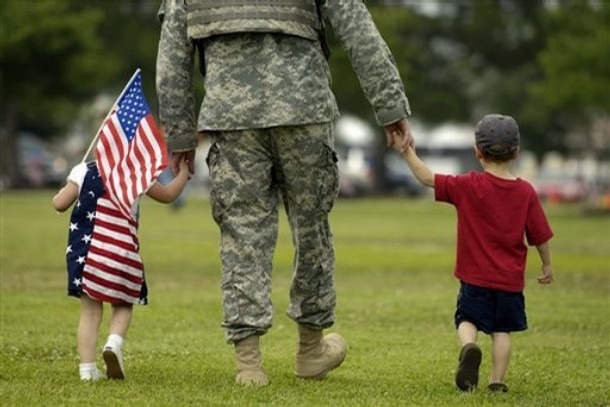Military Brats See More Violence, Drugs at School

Kids from military families are more likely to say they’re bullied at school, that they’ve tried alcohol, carried a weapon or been in a fight, a new study shows.
Researchers found that military brats (and they do prefer that term) were 50 percent more likely to be involved in violence, 40 percent more likely than civilian kids to be harassed and 90 percent more likely to admit to carrying a weapon.
“They fall into a pattern of what looks like being bullied or being isolated,” Ron Avi Astor at the University of Southern California School of Social Work, who oversaw the study, told NBC News.
It may not be surprising. Children of military personnel are often moved from school to school as their parents are assigned, often overseas and back — and often in the middle of a school year.
And, especially in the past 15 years, their families have often been forced to endure long, stressful separations as one or more parents are repeatedly deployed in war zones including Iraq and Afghanistan.
“This is not a military family issue alone,” Astor said. “The families have to deal with the war, they have to deal with the moves, they have to deal with their family members in harm’s way,” he added. “Our society has to understand that a segment of our population needs support.”
Aston said not all military children reported trouble. But his team also did a recent study that suggested children of active duty military and of recent veterans were more likely to think about suicide, as well.
“It’s not all the kids. Some of the kids are super resilient,” Astor noted.
But the findings are nonetheless concerning, Astor, Kathrine Sullivan and colleagues report in the Journal of the American Medical Association’s JAMA Pediatrics.
“For example, military-connected youth had 73 percent greater odds of recent … drug use (eg, cocaine and lysergic acid diethylamide or LSD) and twice the odds of bringing a gun to school compared with nonmilitary-connected peers,” the team wrote.
“Their odds of being threatened with a weapon or being in a fight were also significantly higher than their civilian counterparts.”
Other studies have hinted at this, but they weren’t terribly representative of the population as a whole. So the USC team used a statewide survey of nearly 700,000 school-aged children from nearly every school district in California in March and April of 2013. More than 50,000 of the children had one or two parents in the Air Force, Army, Navy, Marines, National Guard or reserves.
They found that more than 45 percent of youths with military connections admitted they’d tried alcohol at least once, compared to 39 percent of non-military kids. More than 12 percent admitted to smoking, compared to 8 percent of their civilian peers.
And 24 percent of military kids said they feared being beaten up, compared to just under 18 percent of non-military kids. Military kids were more likely to report having rumors spread about them, sexual jokes or gestures made to them, being made fun of for their looks and cyber harassment.
Much could be because they’re often the “new kids” at a school, the researchers said. That could explain the higher rate of weapons use too – they may be planning to protect themselves or to gain status.
“Most military-connected youth demonstrate resilience,” the researchers wrote.
“However, results suggest that during wartime, military-connected youth are at increased risk for adverse outcomes. Further, when compared with data from 2011, the rates of these negative outcomes appear to be increasing.”
Astor noted the recent fashion of recognizing active duty military and veterans, from airline policies of letting servicemen and women in uniform board early, to social media campaigns recognizing their service. But these celebrations rarely extend to the families.
“Their kids and their families deserve some kind of support and a minimum of recognition,” he said.
Schools may not realize they have military kids enrolled if they are not near a base, and many families choose to spend deployments away from traditional military communities. Schools should be on the lookout for such children and help ensure they’re not struggling academically or socially, Astor suggested.
Even something as small as celebrating Veteran’s Day can help, he said.
“It’s not rocket science here. It straightforward community support,” Astor said.












